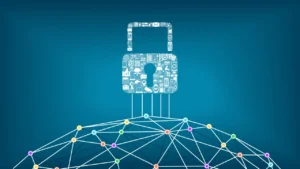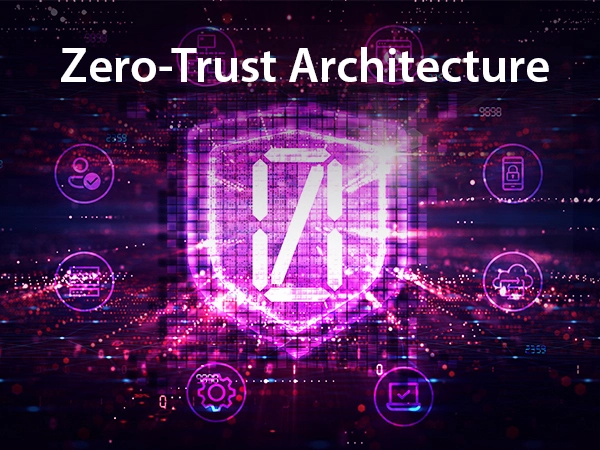Index
- Introduction
- What is a 360 degree protection approach?
- The Four Pillars Of 360 Degree Protection
- Key Benefits to A 360 Degree Approach
- Implementing 360-Degree Protection - Practical Steps
- The Role of Threat Intelligence in 360 Degree Protection
- Real-Time Monitoring and Incident Response
- Regulatory Compliance and 360 Degree Protection
- Challenges and Solutions in Achieving 360 Degree Protection
- Conclusion
- FAQs
Technology and Cybersecurity progress inversely with each other. The more cloud technologies, IoT devices, and endpoints we integrate, the more vulnerable our businesses become in terms of asset security. It is basically a tradeoff for efficiency, convenience, and productivity by technological innovations and advancements. However, the underlying benefits should not be outweighed by these security consequences. Companies have to be proactive in terms of implementing comprehensive cybersecurity protocols to counteract such weaknesses. The sole way to get enhanced protection for your business now is implementing 360 degree protection.
A 360 degree measure of Cybersecurity for a company would need a holistic and comprehensive approach to safeguard a company’s assets, both offline and online, from any sort of cyber threats. The approach should address the various aspects of protection cybersecurity.
What is a 360 degree protection approach?
A 360 degree cybersecurity protection refers to a data security approach that eliminates risks from every probable angle. It simply implies implementing protection cybersecurity measures and protocols that account for weaknesses, threats, and vulnerabilities at every corporate level, both digital and otherwise, as Cybersecurity is not limited to data encryptions and firewalls. Additionally, it heavily depends on the quality of physical surveillance and staff.
The Four Pillars Of 360 Degree Protection
These days 360 degree protection is absolutely necessary for companies, large or small. Here are the four pillars of 360 degree protection:
1. Prevention
The more endpoints, IoT devices, and cloud technologies a business integrates into its operations, the more it is at risk for breaches, especially in terms of asset security. A 360 degree protection cybersecurity makes sure of the protection by Frequently monitoring the systems and network for any activities that are suspicious and taking quick and effective action in case of any breach.
2. Detection
Timely detection of risks is important for any business. A 360-degree protection safeguards your business by implementing backup solutions and data encryption to safeguard sensitive data and ensure business continuity in case of a cybersecurity attack.
3. Response
Organizations should ensure that they are prepared to react swiftly and efficiently to a cybersecurity assault by testing and creating incident response plans with the help of 360 degree protection cybersecurity.
4. Recovery
In addition to all these, 360-degree protection gives you the ultimate security by backing up your data and restoring the backup quickly and efficiently for a smooth flow of work.
Key Benefits to A 360 Degree Approach
This is a high time to be anxious for the people on the front line to guard the business against cybersecurity breaches. However, considering 360 degree protection can ease the unwanted uncertainty and anxiety. Here are the key elements of a 360 degree protection approach:
● Risk Assessment
Carrying out regular risk assessments to prioritize and identify probable threats and vulnerabilities.
● Network Security
Implementing intrusion detection systems, firewalls, and other security measures to safeguard the organization’s systems and networks.
● Access Control
Implementing strict access regulations to restrict and limit access to sensitive systems and data to those who only require it.
● Compliance
360-degree protection ensures that the business is compliant with all the relevant cybersecurity standards and regulations, as compliance is necessary across various industries.
● Third-Party Vendor Assessment
Often assessing the security protocols of third-party partners and vendors to make sure they meet the business’s security standards.
● Communication Plan
Communicating the cybersecurity policies and plan to the stakeholders and employees and making them aware of the role and risks of preventing the attacks.
Implementing 360 degree protection for Cybersecurity requires a significant resource and time investment. However, it is vital for safeguarding the business’s assets and ensuring the continuity of business operations.
Implementing 360-Degree Protection - Practical Steps
● Cybersecurity assessment
A cybersecurity assessment is a vital tool for any organization that wants to safeguard its data. By identifying potential threats and vulnerabilities, an organization can take steps to mitigate the risks. Additionally, a well-built cyber security assessment can assist in improving the overall security of the organization’s systems.
● Security Infrastructure
360 degree protection is a fundamental IT risk and cybersecurity management tactic that will assist in safeguarding sensitive information and security infrastructure. Digital transformation is increasing the difficulty because IT infrastructure is becoming borderless. The key problem here is that businesses cannot protect the infrastructural assets that they cannot see, something that can be mitigated by 360-degree cybersecurity protection.
● Employee Training
Offering daily training to workers on how to recognize and prevent cybersecurity threats such as social engineering tactics and phishing scams.
The Role of Threat Intelligence in 360 Degree Protection
Organizations can identify cyber risks and stop sensitive information from being released through data breaches. They can do so by implementing a well-structured CTI program. By threat identification and analysis, CTI helps organizations implement security measures to fend off future attacks by identifying and evaluating patterns that hackers use.
Real-Time Monitoring and Incident Response
As we see the horizon of further technical advancements, it is understandable that businesses and organizations want something that can offer real-time overseeing and prompt response. The 360 degree protection cybersecurity assists businesses by testing and developing incident response plans to make sure that the company is ready to respond quickly and effectively to a cybersecurity attack.
Regulatory Compliance and 360 Degree Protection
Regulatory compliance is a must whether you are a bug business or a small organization. Most of the time, data breaches can cause severe, complex situations that can harm any organization’s financial standing and reputation. Legal disputes and proceedings coming because of breaches are becoming common among industries. However, it is something that you certainly do not want from yourself. A 360 degree protection would certainly help you steer clear of any legal issues and breaches of data.
Challenges and Solutions in Achieving 360 Degree Protection
Many organizations see protection cybersecurity as a costly venture. While there are security measures that come with low budgets, you certainly cannot compromise on the quality of security when it comes to your company’s valuable data. Thankfully, achieving 360 degree protection is not only budget-friendly, but every penny spent is totally worth it.
Staying updated with the ongoing trends of cybersecurity is a daunting task for business heads. That is why it is helpful to aim to achieve cybersecurity protection for your organization. That being said, it is a good practice for organizations to monitor industry updates and news.
One of the biggest challenges that organizations face is having the belief that their current security is stable and unmatched. The absence of any threats to Cybersecurity leads to such beliefs among big corporations and businesses. However, an attack can happen at any time, and most of the time, it is when you expect it less. It is essential for businesses to upgrade their security. For that reason, it is highly advised to implement 360 degree protection for all businesses.
- The success of any cybersecurity program depends on the group’s performance.
- While digital systems are effective, threat detection and prevention need all company players to pitch in with their efforts.
- For 360-degree Cybersecurity, businesses should organize the responsibilities, roles, and communication channels among the players of the team to enact the necessary protocols.
- Organizing these channels and players can be majorly difficult for big companies with difficult corporate structures and different branches. This is why effective 360 degree protection starts with the formation of a cybersecurity structure.
Conclusion
Before solving and preparing to prevent a problem, you need to understand the problem. While it is vitally essential to safeguard the safety of your cloud network and servers via AI monitoring and digital measures, one weakness can not make the remainder of your cybersecurity efforts redundant.
The primary reason for implementing a 360-degree cybersecurity approach is to safeguard the vulnerable access points or endpoints that organizations tend to overlook. Preventing cyberattacks altogether may not be practical and is close to impossible. However, safeguarding your company from attacks coming from all angles is certainly possible.
By utilizing a 360-degree cyber security approach, a business can take the needed measures to secure digital assets and physical ones as well. This can include video surveillance, general security protocols, better locks, and access control.
We at 63SATS understand that in today’s digital landscape, safeguarding your organization from cyber threats is of the utmost importance. That is why we have developed a comprehensive suite of services and products just to cater to your cybersecurity needs.








